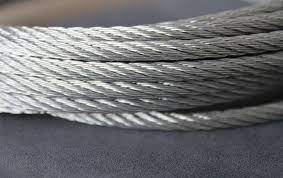Homes in California built prior to 1950 were not instructed to have Pune Car Transport bolting during construction. Home retrofitting simply means two protective phases in securing a house against shifting within a quake. The first part, that’s necessary, is to have retro bolts mounted between the frame sill plate and the foundation of the house. The second part is placing plywood from the lower uncovered walls in two story homes. Such are called “shear walls.” It adds reinforcement against swaying during an earthquake. If you have an older home and don’t really know if it’s retrofitted, you will need to go under the crawl space of the home and check out bolts every 16 inches along the sill plate. If they aren’t present, they can be installed by you or a contractor.
Almost all parts of the country are subject to high winds. It’s important that the residence is designed to withstand a high-wind storm. Knowing if your residence is storm ready requires a few easy steps. One of the first points to consider is the place you live. Coastal areas, for instance, will be more susceptible to powerful winds, such as hurricanes. Local building codes of such areas typically require homes to resist greater wind speeds than inland homes. You need to consult the local building department to learn about the codes that govern your community. Another indicator of your storm-ready house is when it was built. Older homes may not have been built to resist high winds. In Florida, for example, your building codes became much stricter after Hurricane Andrew hit in 1992 and caused severe injury to thousands of homes. A study revealed that Florida homes built after 1996 suffered significantly less damage from Hurricane Charley in 2004 than homes constructed before 1996.
The cost mainly depends on how big the home and whether it’s a single story or multiple stories home. To retrofit the home yourself, you will need to rent an electrical drill that will drill through cement and buy the retro bolts at your local hardware store. Then you may call for a number of estimates from certified contractors and compare prices. Retrofitting is an absolute must in earthquake country. Without the retrofit your home can shift off the foundation. During this procedure fires easily ensue from broken gas lines, water pipes break and create additional damage and the property inside of the home takes a severe beating. Depending on the magnitude of the earthquake as well as the shift that takes place, without retrofitting, loss of life or serious injury could result. In many instances the price of retrofitting may be similar to adding a floor on the back of your home. Not cost prohibitive, but a sensible investment in protection of life and property.
Homeowners can take steps to “mitigate” or lessen the earthquake hazard to your home. Retrofitting is the mitigation process of bolting a wood-frame home to its foundation and providing sheer/pony wall strength. The goal is to increase a home’s structural integrity, but doesn’t mean it is “earthquake proof” (as there is no such thing). Your residence can continue to maintain damage during an earthquake. Past earthquakes have demonstrated that homes not bolted in their foundation, or without proper sheer wall reinforcement can sustain significant damage and make your home unlivable. By having a home retrofit class, find out about: home evaluation, permit process, proper bolt and plate set up safety and engineering solutions.
The price of house bolting is determined by what has to be done and if you’re able to do some of it. Materials may cost as little as a few hundred dollars, or maybe you prefer, trained Crawl Space Protection contractors. Upon completing this class you can do the retrofit yourself or perhaps be a knowledgeable client when hiring a professional contractor.

